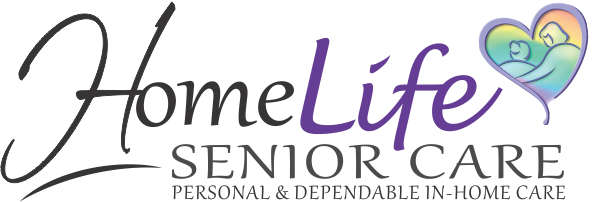
Senior falls can be very frightening for both the senior and the caregiver. And once in this situation, caregivers are often unprepared for how to get an aging loved one safely back on their feet. How to proceed will depends upon whether the senior was injured in the fall. If there is any question, it is always wisest to call 911 for help. If you do not feel able to assist your loved one, first responders are experienced in getting patients on their feet safely, and can confirm that they don’t need to go to the hospital. If you do wish to assist your loved one yourself, it is best to educate yourself on the steps necessary to safely get your loved one up after a fall, and avoid injuring yourself in the process.
Following are steps that can help you get a loved one upright, without hurting them or yourself in the process. Only attempt to help the person if you feel that both of you are able to safely work together. Otherwise, call for assistance. Again, these strategies should only be used when you are confident your loved one hasn’t sustained an injury. Excess movement can cause further harm.
Steps for Assisting a Senior After a Fall
- Have your loved one lie still for a few moments. Stay calm yourself, and help your loved one to remain calm by encouraging them to take slow, deep breaths.
- While lying in place, have them perform a self-assessment to determine if they are injured. Ask them if they are experiencing any pain, where it is located and how severe it is. Examine them yourself for injuries like bruises, bleeding, possible sprains and broken bones.
- If they have a serious injury (like a broken bone), then don’t move them. Call 911 and keep your loved one as warm, comfortable and as still as possible until help arrives.
- If they aren’t hurt and they want to get up, proceed slowly. Stop and call for help if at any point they experience pain or become too fatigued to get all the way up.
- Note: Your responsibility in this process is to guide them through these steps and keep them steady, not lift their weight. Your loved one needs to be capable of doing the physical work required to get up. If they cannot do this, then call 911.
- Find two sturdy chairs. Place one near the senior’s head and the other down by their feet. First, help your loved one roll over onto their side. Have them rest on their side for a few moments to allow their body and blood pressure to adjust.
- Next, assist them in getting from their side onto their hands and knees. You may wish to place a towel beneath their knees to make this step more comfortable.
- Move the chair closest to their head directly in front of where they are so that they can place their hands evenly on the seat and assume a kneeling position.
- Ask your loved one to lean forward on the seat and help them bring their strongest leg forward, leading with the knee to place their foot flat on the floor. The senior should look like they are in a kneeling lunge at the end of this step.
- Move the second chair directly behind the senior, and have them use both their arms and legs to push themselves up and sit back into the second chair. You can help keep your loved one steady, but keep your back upright and make sure they are doing the physical work to lift themselves.
- Let the senior rest in a seated position until you are confident they can stand and move around without falling again.
- It is important to notify their doctor that they have had a fall, and to monitor them for emerging pain or any signs of injury.
- The following link provides a video that gives visual step-by-step instruction for a slightly modified procedure for getting the senior off the floor when a bed or sofa is close by: https://www.youtube.com/watch?v=10jR0zjl19Y
Fall Prevention Strategies
Family members can work together to devise solutions to minimize the risk of falls in your loved one’s home. Small modifications like eliminating trip hazards, installing grab bars and improving lighting can greatly reduce risk. We have resources available to assess a senior’s risk for falls and provide strategies to avoid them. We invite you to call for more information about this topic.
By Caren Parnes for The Senior’s Choice


